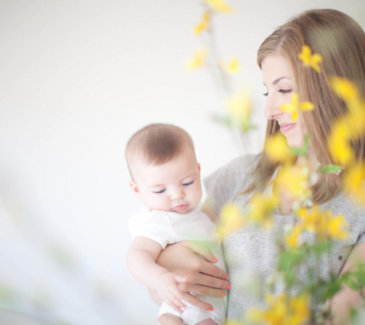Worry has been a constant companion of mine for as long as I can remember.
And as much as I wished it away, it didn’t budge.
So when my fourth grade teacher asked us to write a folktale about a character based on ourselves, I knew right away my story would be about a young girl, The Little Worrier, and her experiences navigating life with an abundance of worry.
As an adult, I learned my high level of worry was something others faced too, but it had a specific, diagnosable name: Anxiety.
It felt freeing to put an all-encompassing term to what I had experienced my entire life, and from there I set out on a life-long journey to fill up my “tool box” with strategies that help make my anxiety more manageable. Some of the tools are specifically geared for my wiring type, while others tools are clinically proven to lower anxiety.
As I’ve gained tools for myself, I have come to realize how helpful they are in everyday life as a parent.
Situations I might otherwise see as defiance or needless meltdowns are transformed when I address these issues through the lens of calming anxiety. Using deescalating techniques rather than immediate consequences is not only a grace-based parenting approach, but it is preparing my children with life-long skills.
In the midst of a pandemic, worries and anxieties are heightened for parents and children alike.
Whether increased anxiety is circumstantial or something you or your child struggles with continuously, the goal is to recognize it, call it by name, and give it comfort. Grace allows us to be human and learn how to navigate these intensified emotions, rather than ignore them, stuff them, or call them bad. Empowering our children from a young age to recognize worry and anxiety and equipping them with tools to walk through it can be both life-changing and trust-building, as your child begins to see you as a comforter, ally, and cheerleader.
Though having these tools readily available mentally and at a moment’s notice is the ultimate goal, let’s be real. It takes a while to get there. So until then, make the tools tangible. Try creating a physical tool box with your child. This anxiety toolbox holds deescalating strategies you can grab and reference in a moment of heightened emotions. Remember that the process of making this box with your hands can be therapeutic in itself. So enjoy the process.
Making an Anxiety Toolbox (made easy)
-
DECIDE with your child what aesthetic you’re going for. I wanted mine to be visually calming, so I used watercolor. You might want yours to be minimalist, whimsical, or simply black pen scribbled on white paper. Whatever you chose, have it reflect who you both are. Choose paper that is thick and sturdy, such as cardstock or watercolor paper. You want your toolbox to last.
-
FIND a box that can hold your tool box reference cards. I found a small, paper mache square box at my local craft store. You’re simply looking for any box with a lid, roughly 3”x3,” but there’s lots of flexibility here.
-
MAKE a rough list on a scratch piece of paper of strategies you’d like included. This can include bible verses, song lyrics, and personal calming strategies you’ve learned. Some examples:
-
Bible verses: John 16:33, Philippians 4:6-8, Isaiah 54:10
-
Song lyrics: Listen to some favorite worship songs together and pick out a few lines that really stick out to you
-
Personal calming strategies: A few for me are coloring, painting, crafting, taking a hot shower or bath, listening to calming music, a tight hug from someone I love
-
-
ADD in some clinical and researched-based anxiety-relief techniques (listed below). Practice some of them together before anxiety arises so when you’re in the midst of a moment of heightened emotion, you’ll already know what to do. For more ideas and practical strategies, check out episode 42 of the Living Wholehearted Podcast, where Terra unpacks more tools for anxiety.
-
Check in with your senses. Notice slowly and in detail what you see, hear, smell, feel, and taste.
-
List out all your worries. Then write out truths about God, yourself, and what would really happen if the worst case scenario occurred.
-
Take deep breaths. 4 inhales and 6 exhales are the proven strategy to calm the amygdala (lower brain). With your child, consider using the fingers to pretend blowing out birthday candles. Sing the birthday song while you blow your child blows each finger until the finger falls. Deeper breaths simulate a walking pace and remind the emotional part of the brain that we okay and not sprinting from a dinosaur.
-
Exercise. Sometimes moving the body releases hormones that make internal shifts in the brain. Go for a walk. Do jumping jacks, push ups, squats, or whatever you and your child like to do.
-
Use imagery and take a mini-vacation to a place you know brings peace and reminds you that you are going to be okay. This pace can be real or imagined. Describe that scene to one another in every detail.
-
Use a worry jar to help you and your child put all your worries in a safe place where God will hold them and care for them. “Cast all your anxiety on Him, because He cares for you.” 1 Peter 5:7
-
-
CUT your paper into squares based on the size of your box. (I’d recommend about an inch shorter than your box in length and width. So for my 3×3” box, I cut my paper to about 2.5×2.5.”)
-
CREATE! Write out your strategies, one on each card. Decorate each card to suit your style. If one of you is more artistic and the other is more linear-thinking, one can decorate while the other writes. Have it reflect both of your personalities!
-
STORE your box somewhere you both can easily access as needed.
Though this toolbox can certainly be used independently, using it together or as a family can be even more powerful. Parents who recognize their child’s need for emotional support and comfort in moments of high-anxiety (which often looks like disobedience) are not only creating less angst in the moment, but they are helping their child feel like they are not “too” much for their mom and dad. Every loving parent wants their child to feel confident, seen, loved, and build resiliency. The anxiety toolbox will help you get there!
Looking for other resources on anxiety? Check out the articles below:
- How to talk to your kids about depression and suicide: Three questions for parents to ask
- Three things your kids need today
- Does dealing with anxiety make me a bad Christian?
- 5 warning signs your child or teen may be depressed and what to do about it
- 10 Bible verses about anxiety
Fear and parenting collide sometimes on a daily basis. Watch this video from Lisa Clark on what scripture says about fear and how parents should navigate through a sea of unknowns



